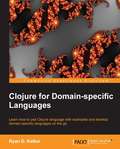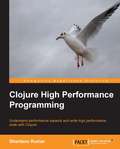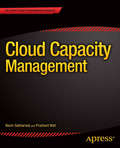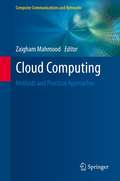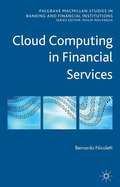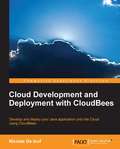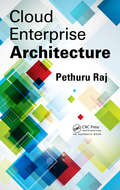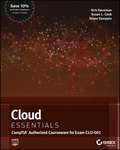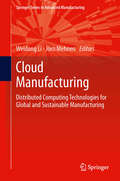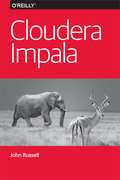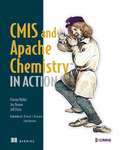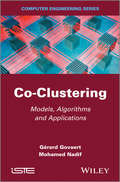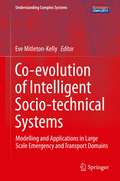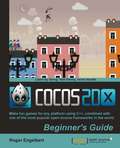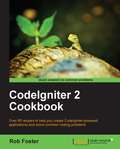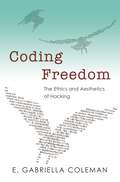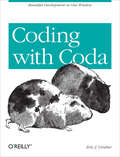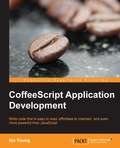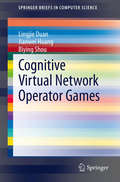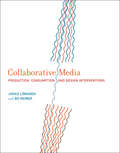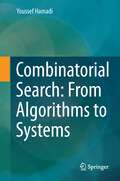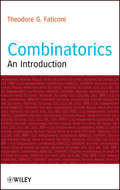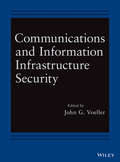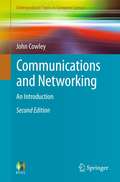- Table View
- List View
Clojure for Domain-specific Languages
by Ryan D. KelkerAn example-oriented approach to develop custom domain-specific languages. If you've already developed a few Clojure applications and wish to expand your knowledge on Clojure or domain-specific languages in general, then this book is for you. If you're an absolute Clojure beginner, then you may only find the detailed examples of the core Clojure components of value. If you've developed DSLs in other languages, this Lisp and Java-based book might surprise you with the power of Clojure.
Clojure High Performance Programming
by Shantanu KumarThis is a short, practical guide that will teach you everything you need to know to start writing high performance Clojure code.This book is ideal for intermediate Clojure developers who are looking to get a good grip on how to achieve optimum performance. You should already have some experience with Clojure and it would help if you already know a little bit of Java. Knowledge of performance analysis and engineering is not required. For hands-on practice, you should have access to Clojure REPL with Leiningen.
Cloud Capacity Management: Capacity Management
by Navin Sabharwal Prashant WaliCloud Capacity Management helps readers in understanding what the cloud, IaaS, PaaS, SaaS are, how they relate to capacity planning and management and which stakeholders are involved in delivering value in the cloud value chain. It explains the role of capacity management for a creator, aggregator, and consumer of cloud services and how to provision for it in a 'pay as you use model'. This involves a high level of abstraction and virtualization to facilitate rapid and on demand provisioning of services. The conventional IT service models take a traditional approach when planning for service capacity to provide optimum services levels which has huge cost implications for service providers. This book addresses the gap areas between traditional capacity management practices and cloud service models. It also showcases capacity management process design and implementation in a cloud computing domain using ITSM best practices. This book is a blend of ITSM best practices and infrastructure capacity planning and optimization implementation in various cloud scenarios. Cloud Capacity Management addresses the basics of cloud computing, its various models, and their impact on capacity planning. This book also highlights the infrastructure capacity management implementation process in a cloud environment showcasing inherent capabilities of tool sets available and the various techniques for capacity planning and performance management. Techniques like dynamic resource scheduling, scaling, load balancing, and clustering etc are explained for implementing capacity management. This book also covers emerging techniques in the cloud capacity management area: Self learning systems Yield management Proactive capacity planning
Cloud Computing: Methods and Practical Approaches (Computer Communications and Networks)
by Zaigham MahmoodThis book presents both state-of-the-art research developments and practical guidance on approaches, technologies and frameworks for the emerging cloud paradigm. Topics and features: presents the state of the art in cloud technologies, infrastructures, and service delivery and deployment models; discusses relevant theoretical frameworks, practical approaches and suggested methodologies; offers guidance and best practices for the development of cloud-based services and infrastructures, and examines management aspects of cloud computing; reviews consumer perspectives on mobile cloud computing and cloud-based enterprise resource planning; explores software performance testing, open-source cloudware support, and assessment methodologies for modernization, migration and pre-migration; describes emerging new methodologies relevant to the cloud paradigm, and provides suggestions for future developments and research directions.
Cloud Computing in Financial Services
by Bernardo NicolettiFinancial institutions must become more innovative in the conduct of their business. Cloud computing helps to achieve several objectives: innovative services, re-engineered processes, business agility and value optimization. Research, consultancy practice and case studies in this book consider the opportunities and risks with vendor relationships.
Cloud Development and Deployment with CloudBees
by Nicolas De LoofThis is an easy-to-follow yet comprehensive guide that follows a step-by-step approach to leverage the CloudBees services.If you are a Java developer and want to explore the world of the cloud, this book is ideal for you. This book will guide you through the process of developing and deploying an application on the cloud. Prior knowledge of Java is essential.
Cloud Enterprise Architecture
by Pethuru RajCloud Enterprise Architecture examines enterprise architecture (EA) in the context of the surging popularity of Cloud computing. It explains the different kinds of desired transformations the architectural blocks of EA undergo in light of this strategically significant convergence. Chapters cover each of the contributing architectures of EA-business, information, application, integration, security, and technology-illustrating the current and impending implications of the Cloud on each. Discussing the implications of the Cloud paradigm on EA, the book details the perceptible and positive changes that will affect EA design, governance, strategy, management, and sustenance. The author ties these topics together with chapters on Cloud integration and composition architecture. He also examines the Enterprise Cloud, Federated Clouds, and the vision to establish the InterCloud. Laying out a comprehensive strategy for planning and executing Cloud-inspired transformations, the book: Explains how the Cloud changes and affects enterprise architecture design, governance, strategy, management, and sustenance Presents helpful information on next-generation Cloud computing Describes additional architectural types such as enterprise-scale integration, security, management, and governance architectures This book is an ideal resource for enterprise architects, Cloud evangelists and enthusiasts, and Cloud application and service architects. Cloud center administrators, Cloud business executives, managers, and analysts will also find the book helpful and inspirational while formulating appropriate mechanisms and schemes for sound modernization and migration of traditional applications to Cloud infrastructures and platforms.
Cloud Essentials
by Kalani Kirk Hausman Susan L. Cook Telmo SampaioCompTIA-Authorized courseware for the Cloud Essentials Exam (CLO-001)What better way to get up to speed on cloud computing than with this new book in the popular Sybex Essentials series? Cloud Essentials covers the basics of cloud computing and its place in the modern enterprise. Explore public and private clouds; contrast the "as a service" models for PaaS, SaaS, IaaS, or XaaS platforms; plan security; and more. In addition, the book covers the exam objectives for the both the CompTIA Cloud Essentials (Exam CLO-001) exam and the EXIN Cloud Computing Foundation (EX0-116) certification exams and includes suggested exercises and review questions to reinforce your learning.Gets you up to speed on the hottest trend in IT--cloud computingPrepares IT professionals and those new to the cloud for and cover all of the CompTIA Cloud Essentials and EXIN Cloud Computing Foundation exam objectivesServes as CompTIA Authorized courseware for the examExamines various models for cloud computing implementation, including public and private cloudsContrasts "as a service" models for platform (PaaS), software (SaaS), infrastructure (IaaS), and other technologies (XaaS)Identifies strategies for implementation on tight budgets and goes into planning security and service managementGet a through grounding in cloud basics and prepare for your cloud certification exam with Cloud Essentials.
Cloud Manufacturing: Distributed Computing Technologies for Global and Sustainable Manufacturing (Springer Series in Advanced Manufacturing)
by Weidong Li Jörn MehnenGlobal networks, which are the primary pillars of the modern manufacturing industry and supply chains, can only cope with the new challenges, requirements and demands when supported by new computing and Internet-based technologies. Cloud Manufacturing: Distributed Computing Technologies for Global and Sustainable Manufacturing introduces a new paradigm for scalable service-oriented sustainable and globally distributed manufacturing systems. The eleven chapters in this book provide an updated overview of the latest technological development and applications in relevant research areas. Following an introduction to the essential features of Cloud Computing, chapters cover a range of methods and applications such as the factors that actually affect adoption of the Cloud Computing technology in manufacturing companies and new geometrical simplification method to stream 3-Dimensional design and manufacturing data via the Internet. This is further supported case studies and real life data for Waste Electrical and Electronic Equipment (WEEE) remanufacturing. This compilation of up to date research and literature can be used as a textbook or reference for mechanical, manufacturing, and computer engineering graduate students and researchers for efficient utilization, deployment and development of distributed and Cloud manufacturing systems, services and applications.
Cloudera Impala
by John RussellLearn about Cloudera Impala--an open source project that's opening up the Apache Hadoop software stack to a wide audience of database analysts, users, and developers. The Impala massively parallel processing (MPP) engine makes SQL queries of Hadoop data simple enough to be accessible to analysts familiar with SQL and to users of business intelligence tools--and it's fast enough to be used for interactive exploration and experimentation.
CMIS and Apache Chemistry in Action
by Jay Brown Florian Mueller Jeff PottsSummaryCMIS and Apache Chemistry in Action is a comprehensive guide to the CMIS standard and related ECM concepts, written by the authors of the standard. In it, you'll tackle hands-on examples for building applications on CMIS repositories from both the client and the server sides. You'll learn how to create new content-centric applications that install and run in any CMIS-compliant repository.About The TechnologyContent Management Interoperability Services (CMIS) is an OASIS standard for accessing content management systems. It specifies a vendor-and language-neutral way to interact with any compliant content repository. Apache Chemistry provides complete reference implementations of the CMIS standard with robust APIs for developers writing tools, applications, and servers.About This BookCMIS and Apache Chemistry in Action is a comprehensive guide to the CMIS standard and related ECM concepts. In it, you'll find clear teaching and instantly useful examples for building content-centric client and server-side applications that run against any CMIS-compliant repository. In fact, using the CMIS Workbench and the InMemory Repository from Apache Chemistry, you'll have running code talking to a real CMIS server by the end of chapter 1.This book requires some familiarity with content management systems and a standard programming language like Java or C#. No exposure to CMIS or Apache Chemistry is assumed.Purchase of the print book includes a free eBook in PDF, Kindle, and ePub formats from Manning Publications.What's InsideThe only CMIS book endorsed by OASISComplete coverage of the CMIS 1.0 and 1.1 specificationsCookbook-style tutorials and real-world examplesAbout the AuthorsFlorian Müller, Jay Brown, and Jeff Potts are among the original authors, contributors, and leaders of Apache Chemistry and the OASIS CMIS specification. They continue to shape CMIS implementations at Alfresco, IBM, and SAP.Table of ContentsPART 1 UNDERSTANDING CMISIntroducing CMISExploring the CMIS domain modelCreating, updating, and deleting objects with CMISCMIS metadata: types and propertiesQueryPART 2 HANDS-ON CMIS CLIENT DEVELOPMENTMeet your new project: The BlendThe Blend: read and query functionalityThe Blend: create, update, and delete functionalityUsing other client librariesBuilding mobile apps with CMISPART 3 ADVANCED TOPICSCMIS bindingsSecurity and controlPerformanceBuilding a CMIS server
Co-Clustering: Models, Algorithms and Applications (Focus Ser.)
by Gérard Govaert Mohamed NadifCluster or co-cluster analyses are important tools in a variety of scientific areas. The introduction of this book presents a state of the art of already well-established, as well as more recent methods of co-clustering. The authors mainly deal with the two-mode partitioning under different approaches, but pay particular attention to a probabilistic approach. Chapter 1 concerns clustering in general and the model-based clustering in particular. The authors briefly review the classical clustering methods and focus on the mixture model. They present and discuss the use of different mixtures adapted to different types of data. The algorithms used are described and related works with different classical methods are presented and commented upon. This chapter is useful in tackling the problem of co-clustering under the mixture approach. Chapter 2 is devoted to the latent block model proposed in the mixture approach context. The authors discuss this model in detail and present its interest regarding co-clustering. Various algorithms are presented in a general context. Chapter 3 focuses on binary and categorical data. It presents, in detail, the appropriated latent block mixture models. Variants of these models and algorithms are presented and illustrated using examples. Chapter 4 focuses on contingency data. Mutual information, phi-squared and model-based co-clustering are studied. Models, algorithms and connections among different approaches are described and illustrated. Chapter 5 presents the case of continuous data. In the same way, the different approaches used in the previous chapters are extended to this situation. Contents 1. Cluster Analysis. 2. Model-Based Co-Clustering. 3. Co-Clustering of Binary and Categorical Data. 4. Co-Clustering of Contingency Tables. 5. Co-Clustering of Continuous Data. About the Authors Gérard Govaert is Professor at the University of Technology of Compiègne, France. He is also a member of the CNRS Laboratory Heudiasyc (Heuristic and diagnostic of complex systems). His research interests include latent structure modeling, model selection, model-based cluster analysis, block clustering and statistical pattern recognition. He is one of the authors of the MIXMOD (MIXtureMODelling) software. Mohamed Nadif is Professor at the University of Paris-Descartes, France, where he is a member of LIPADE (Paris Descartes computer science laboratory) in the Mathematics and Computer Science department. His research interests include machine learning, data mining, model-based cluster analysis, co-clustering, factorization and data analysis. Cluster Analysis is an important tool in a variety of scientific areas. Chapter 1 briefly presents a state of the art of already well-established as well more recent methods. The hierarchical, partitioning and fuzzy approaches will be discussed amongst others. The authors review the difficulty of these classical methods in tackling the high dimensionality, sparsity and scalability. Chapter 2 discusses the interests of coclustering, presenting different approaches and defining a co-cluster. The authors focus on co-clustering as a simultaneous clustering and discuss the cases of binary, continuous and co-occurrence data. The criteria and algorithms are described and illustrated on simulated and real data. Chapter 3 considers co-clustering as a model-based co-clustering. A latent block model is defined for different kinds of data. The estimation of parameters and co-clustering is tackled under two approaches: maximum likelihood and classification maximum likelihood. Hard and soft algorithms are described and applied on simulated and real data. Chapter 4 considers co-clustering as a matrix approximation. The trifactorization approach is considered and algorithms based on update rules are described. Links with numerical and probabi
Co-evolution of Intelligent Socio-technical Systems: Modelling and Applications in Large Scale Emergency and Transport Domains (Understanding Complex Systems)
by Evangelia Mitleton-KellyAs the interconnectivity between humans through technical devices is becoming ubiquitous, the next step is already in the making: ambient intelligence, i.e. smart (technical) environments, which will eventually play the same active role in communication as the human players, leading to a co-evolution in all domains where real-time communication is essential. This topical volume, based on the findings of the Socionical European research project, gives equal attention to two highly relevant domains of applications: transport, specifically traffic, dynamics from the viewpoint of a socio-technical interaction and evacuation scenarios for large-scale emergency situations. Care was taken to investigate as much as possible the limits of scalability and to combine the modeling using complex systems science approaches with relevant data analysis.
Cocos2d-x by Example Beginner's Guide
by Roger EngelbertGet to grips with Cocos2D-X using step-by-step examples. Roger Engelbert will have you smiling throughout and learning valuable information at every turn.If you have brilliant ideas for amazing games and want to bring them to life, then this book is what you need. Work through easy-to-follow examples and learn exactly what you need to know to make your games a reality.No programming experience necessary!
CodeIgniter 2 Cookbook
by Rob FosterPresented in a recipe-based format, you are led step-by-step through each aspect of CodeIgniter, allowing you to dip in and out as you choose.CodeIgniter 2 Cookbook is for intermediate to advanced PHP developers who want to begin using the powerful CodeIgniter framework to create web applications. Familiarity with CodeIgniter isn't essential, but it will be useful if you have been introduced to the framework before.
Coding Freedom: The Ethics and Aesthetics of Hacking
by E. Gabriella ColemanWho are computer hackers? What is free software? And what does the emergence of a community dedicated to the production of free and open source software--and to hacking as a technical, aesthetic, and moral project--reveal about the values of contemporary liberalism? Exploring the rise and political significance of the free and open source software (F/OSS) movement in the United States and Europe, Coding Freedom details the ethics behind hackers' devotion to F/OSS, the social codes that guide its production, and the political struggles through which hackers question the scope and direction of copyright and patent law. In telling the story of the F/OSS movement, the book unfolds a broader narrative involving computing, the politics of access, and intellectual property. E. Gabriella Coleman tracks the ways in which hackers collaborate and examines passionate manifestos, hacker humor, free software project governance, and festive hacker conferences. Looking at the ways that hackers sustain their productive freedom, Coleman shows that these activists, driven by a commitment to their work, reformulate key ideals including free speech, transparency, and meritocracy, and refuse restrictive intellectual protections. Coleman demonstrates how hacking, so often marginalized or misunderstood, sheds light on the continuing relevance of liberalism in online collaboration.
Coding with Coda
by Eric J. GruberLike to build websites in the wild with your MacBook? This concise hands-on guide introduces you to the ideal editor: Coda 2. Rather than clutter your screen with shell access, a separate CSS editor, and a version control app, you'll discover how Coda's "one-window web development" bundles everything into one neat application. Take Coda on a trial run, then learn step-by-step how to configure each feature to fit your working style. You'll find out firsthand how Coda will save you time and effort on your next project. Get to know Coda's workflow by building a sample site Delve into features such as the tab bar, path bar, sidebar, and Sites view Set up your own development environment-and dig deeper into the editor's options Get tips for taking full advantage of the text and MySQL editors Create a Git or Subversion repository for source control management Learn the finer points of sharing project documents across a network Discover the built-in reference books, and learn how to extend Coda
CoffeeScript Application Development
by Ian YoungCoffeeScript Application Development is a practical, hands-on guide with step-by-step instructions. Follow the smooth and easy tutorial approach, covering examples that build in complexity. By the final chapter you'll be wondering why you didn't try CoffeeScript sooner.If you are a JavaScript developer who wants to save time and add power to your code, then this is the book that will help you do it. With minimal fuss you will learn a whole new language which will reduce your application development time from weeks to days.
Cognitive Virtual Network Operator Games (SpringerBriefs in Computer Science)
by Jianwei Huang Lingjie Duan Biying ShouThis SpringerBrief provides an overview of cognitive mobile virtual network operator's (C-MVNO) decisions under investment flexibility, supply uncertainty, and market competition in cognitive radio networks. This is a new research area at the nexus of cognitive radio engineering and microeconomics. The authors focus on an operator's joint spectrum investment and service pricing decisions. The readers will learn how to tradeoff the two flexible investment choices (dynamic spectrum leasing and spectrum sensing) under supply uncertainty. Furthermore, if there is more than one operator, we present analysis of the competition among operators in obtaining spectrum and pricing services to attract users. The brief is designed for professionals working with C-MVNOs. Succinct and practical, it will assist them in making optimal investments and pricing decisions. It will also be of interest to researchers.
Collaborative Media: Production, Consumption, and Design Interventions (The\mit Press Ser.)
by Jonas Lowgren Bo ReimerA thorough analysis of contemporary digital media practices, showing how people increasingly not only consume but also produce and even design media. With many new forms of digital media–including such popular social media as Facebook, Twitter, and Flickr—the people formerly known as the audience no longer only consume but also produce and even design media. Jonas Löwgren and Bo Reimer term this phenomenon collaborative media, and in this book they investigate the qualities and characteristics of these forms of media in terms of what they enable people to do. They do so through an interdisciplinary research approach that combines the social sciences and humanities traditions of empirical and theoretical work with practice-based, design-oriented interventions. Löwgren and Reimer offer analysis and a series of illuminating case studies—examples of projects in collaborative media that range from small multidisciplinary research experiments to commercial projects used by millions of people. Löwgren and Reimer discuss the case studies at three levels of analysis: society and the role of collaborative media in societal change; institutions and the relationship of collaborative media with established media structures; and tribes, the nurturing of small communities within a large technical infrastructure. They conclude by advocating an interventionist turn within social analysis and media design.
The Colour Photography Field Guide: The Essential Guide to Hue for Striking Digital Images (Field Guide Ser.)
by Michael FreemanUnderstand the role colour plays in your images, learn to appreciate its dynamic effects and find out how to capture and reproduce it as precisely as possible in your own images.The Colour Photography Field Guide provides a unique look at analysing and combining three important ways of dealing with colour. The first is the subjective and cultural response to individual colour: the perception. The second is how colours are found and appear in photography: the science. The third is the means by which they can be viewed and altered digitally: the expression.- A clear and technically precise look at how colour affects your digital images- Portable and lightweight, for on-the-spot information and inspiration- With a host of case studies examining difficult colour situations such as capturing flesh tones and unreal colours
Combinatorial Search: From Algorithms To Systems
by Youssef HamadiAlthough they are believed to be unsolvable in general, tractability results suggest that some practical NP-hard problems can be efficiently solved. Combinatorial search algorithms are designed to efficiently explore the usually large solution space of these instances by reducing the search space to feasible regions and using heuristics to efficiently explore these regions. Various mathematical formalisms may be used to express and tackle combinatorial problems, among them the constraint satisfaction problem (CSP) and the propositional satisfiability problem (SAT). These algorithms, or constraint solvers, apply search space reduction through inference techniques, use activity-based heuristics to guide exploration, diversify the searches through frequent restarts, and often learn from their mistakes. In this book the author focuses on knowledge sharing in combinatorial search, the capacity to generate and exploit meaningful information, such as redundant constraints, heuristic hints, and performance measures, during search, which can dramatically improve the performance of a constraint solver. Information can be shared between multiple constraint solvers simultaneously working on the same instance, or information can help achieve good performance while solving a large set of related instances. In the first case, information sharing has to be performed at the expense of the underlying search effort, since a solver has to stop its main effort to prepare and commu nicate the information to other solvers; on the other hand, not sharing information can incur a cost for the whole system, with solvers potentially exploring unfeasible spaces discovered by other solvers. In the second case, sharing performance measures can be done with little overhead, and the goal is to be able to tune a constraint solver in relation to the characteristics of a new instance - this corresponds to the selection of the most suitable algorithm for solving a given instance. The book is suitable for researchers, practitioners, and graduate students working in the areas of optimization, search, constraints, and computational complexity.
Combinatorics
by Theodore G.FaticoniBridges combinatorics and probability and uniquely includes detailed formulas and proofs to promote mathematical thinking Combinatorics: An Introduction introduces readers to counting combinatorics, offers examples that feature unique approaches and ideas, and presents case-by-case methods for solving problems. Detailing how combinatorial problems arise in many areas of pure mathematics, most notably in algebra, probability theory, topology, and geometry, this book provides discussion on logic and paradoxes; sets and set notations; power sets and their cardinality; Venn diagrams; the multiplication principal; and permutations, combinations, and problems combining the multiplication principal. Additional features of this enlightening introduction include: Worked examples, proofs, and exercises in every chapter Detailed explanations of formulas to promote fundamental understanding Promotion of mathematical thinking by examining presented ideas and seeing proofs before reaching conclusions Elementary applications that do not advance beyond the use of Venn diagrams, the inclusion/exclusion formula, the multiplication principal, permutations, and combinations Combinatorics: An Introduction is an excellent book for discrete and finite mathematics courses at the upper-undergraduate level. This book is also ideal for readers who wish to better understand the various applications of elementary combinatorics.
Communications and Information Infrastructure Security
by John G. VoellerCommunication and Information Systems Security features articles from the Wiley Handbook of Science and Technology for Homeland Security covering strategies for protecting the telecommunications sector, wireless security, advanced web based technology for emergency situations. Science and technology for critical infrastructure consequence mitigation are also discussed.
Communications and Networking: An Introduction (Undergraduate Topics in Computer Science)
by John CowleyThis textbook presents a detailed introduction to the essentials of networking and communications technologies. Revised and updated, this new edition retains the step-by-step approach of the original, organised to help those without a strong knowledge of the subject matter. Features: provides chapter-ending summaries and review questions, an Appendix on TCP/IP packet formats and an expanded Glossary; supplies supplementary material at the associated Springer website, including teaching slides, solutions to the end-of-chapter questions and supplementary exercises with solutions; presents a greater emphasis on mobile computing and network security, and extended coverage of IPv6 (NEW); discusses networking models and standards, local area and wide area networks, network protocols, TCP/IP-based networks, network management and wireless communications; examines grid and cloud computing, microblogging, mobile ad hoc networks, near-field communication, Power over Ethernet and the Ground Positioning System (NEW).
